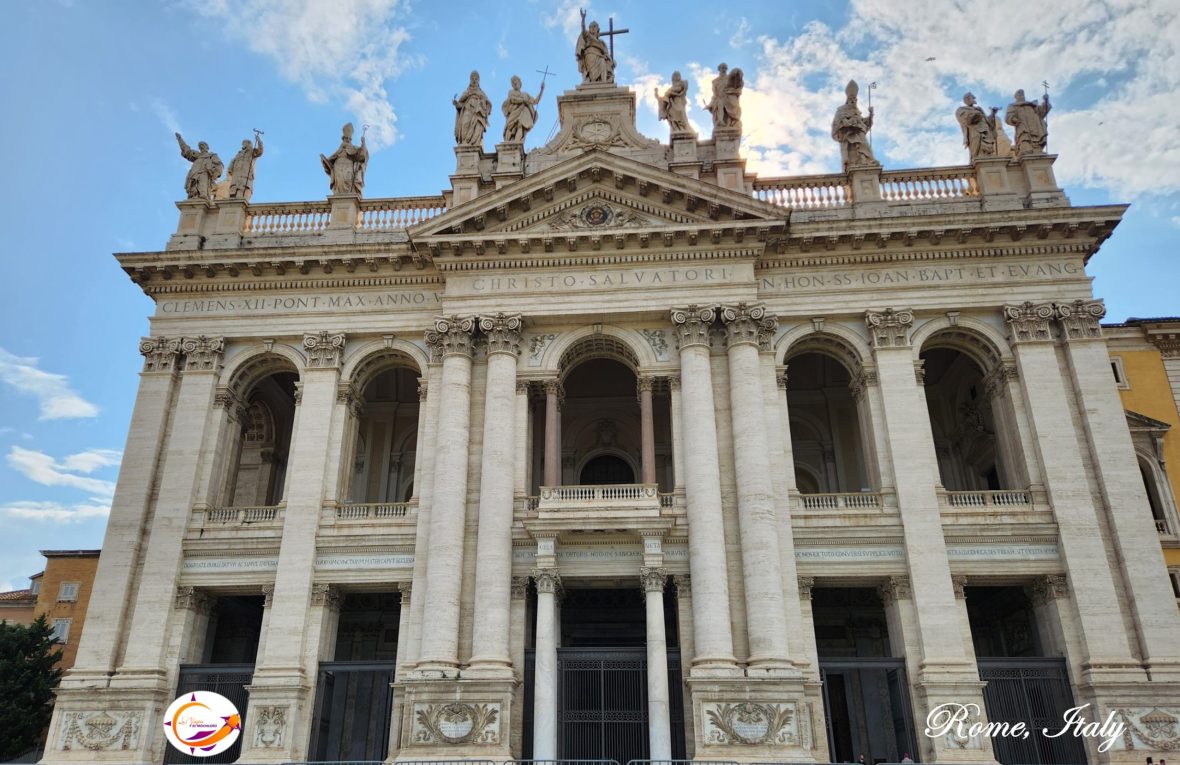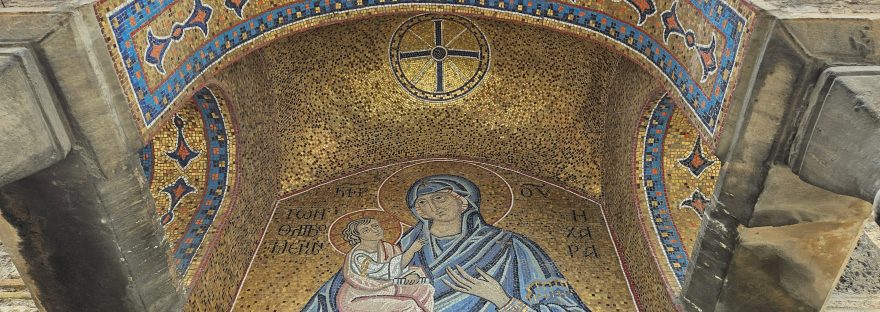The Church of Panagia Kapnikarea, is considered a relic of Byzantine architecture and one of the oldest Orthodox churches in the city of Athens. According to archaeological research, this Byzantine church where the ancient Greeks worshipped the goddess Athena or Demeter, was built over an ancient temple in the 11th century, probably in the year 1050, a common practice among early Christian churches. Today, it is dedicated to the Virgin Mary, known as “Panagia”.
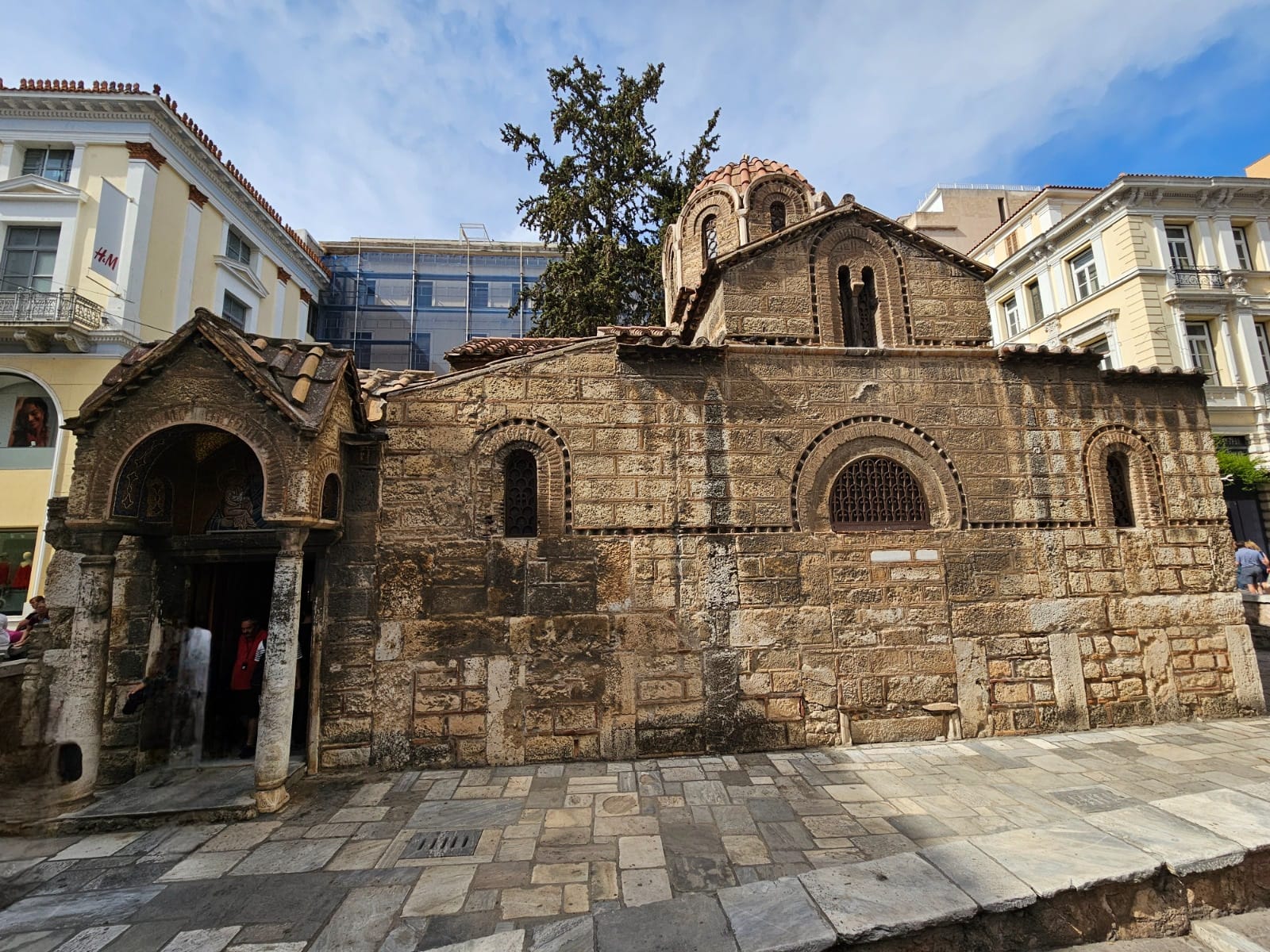
There are several theories about the origin of the name “Kapnikarea”, which is part of the church’s title. One possibility is that the term is derived from “kapnikon”, a tax levied on households during the Byzantine Empire. Another theory suggests that it comes from the surname of the tax collector in charge of the church. In addition, some argue that it could derive from “kapnismeno”, which in Greek means “smoked”, alluding to the marks left by fires on the building.
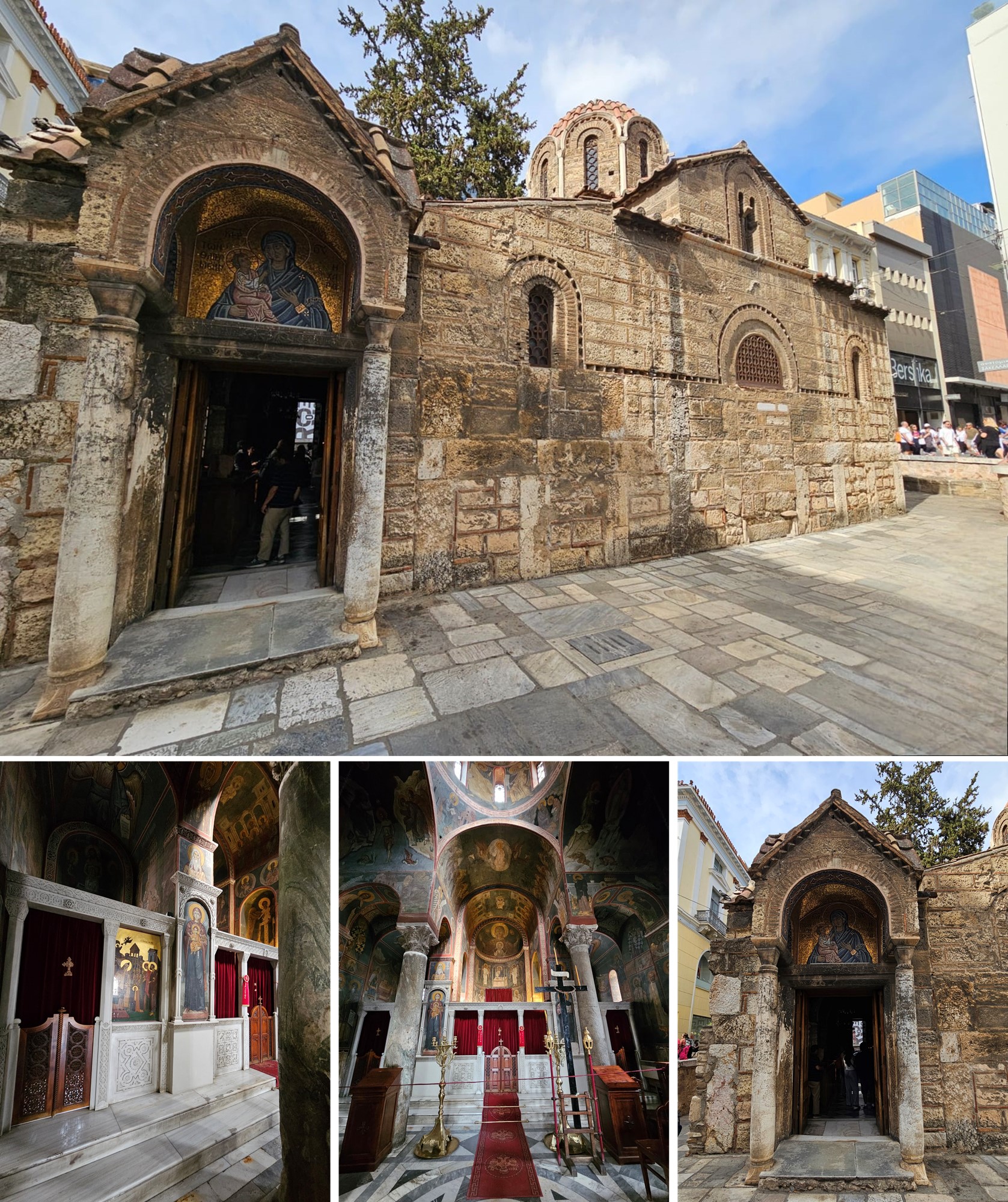
It seems that the Church of Kapnikarea may have originally been the “katholikon” of a monastery. In Greek, the word “katholikon” means “universal” and refers to the main church of a monastery or diocese of the Orthodox Church. The church has a square cross plan and currently consists of three sections: the main church, located on the south side and dedicated to the Virgin Mary; to the north, there is a chapel dedicated to St. Barbara (Agia Varvara); and on the west side, the narthex, which serves as the entrance.
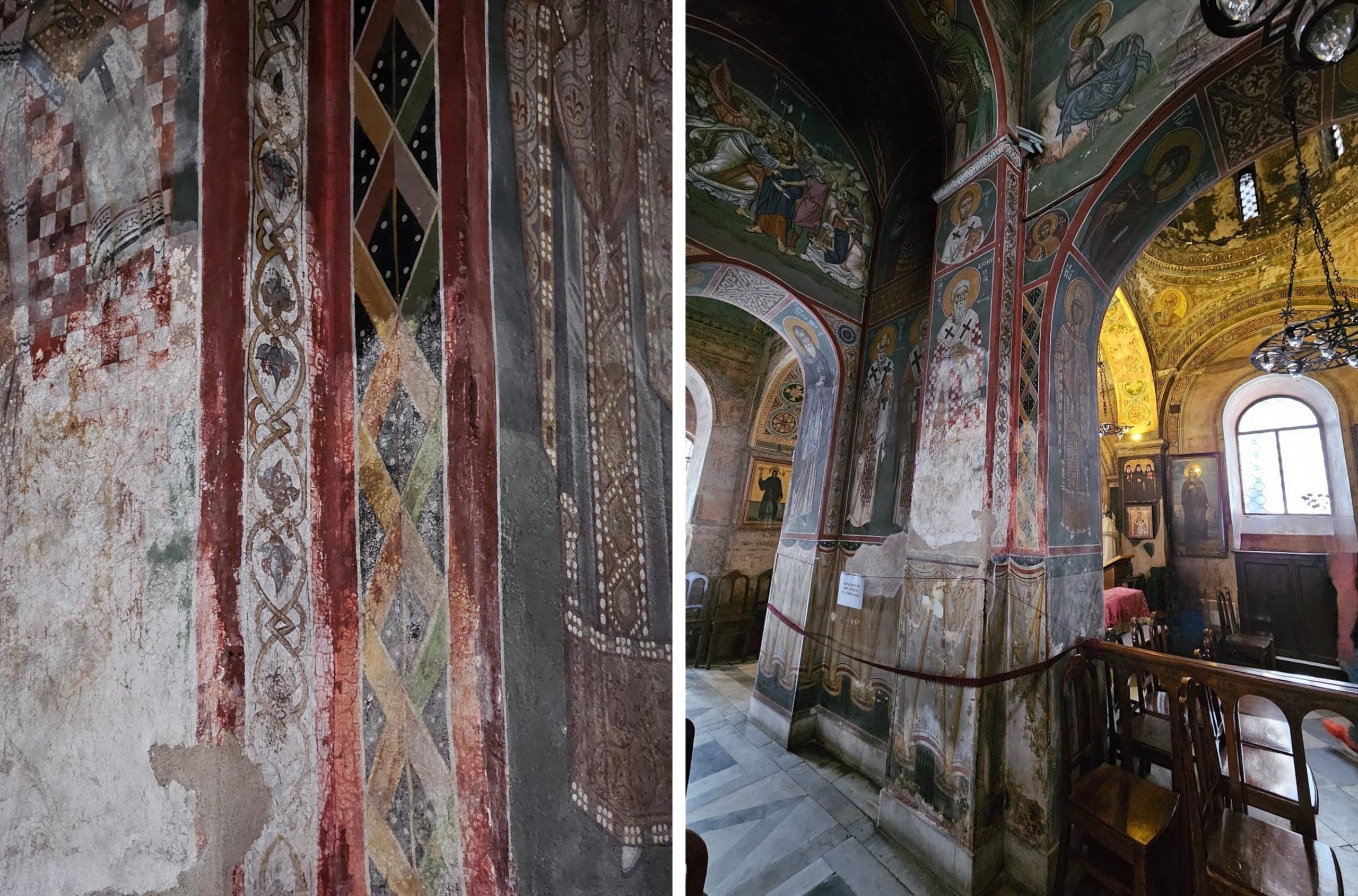
The walls of the church are made with typical cloisonné masonry, a decorative technique that consists of applying enamel on metal surfaces. The word comes from French and means “compartmentalized.” It is created by placing colored glass paste inside compartments made of copper or bronze wires and these compartments are separated by thin metal strips fixed edgewise to the floor. In the Byzantine Empire a technique with thinner wires was developed that allowed making pictorial images and was used to decorate temples and palaces.
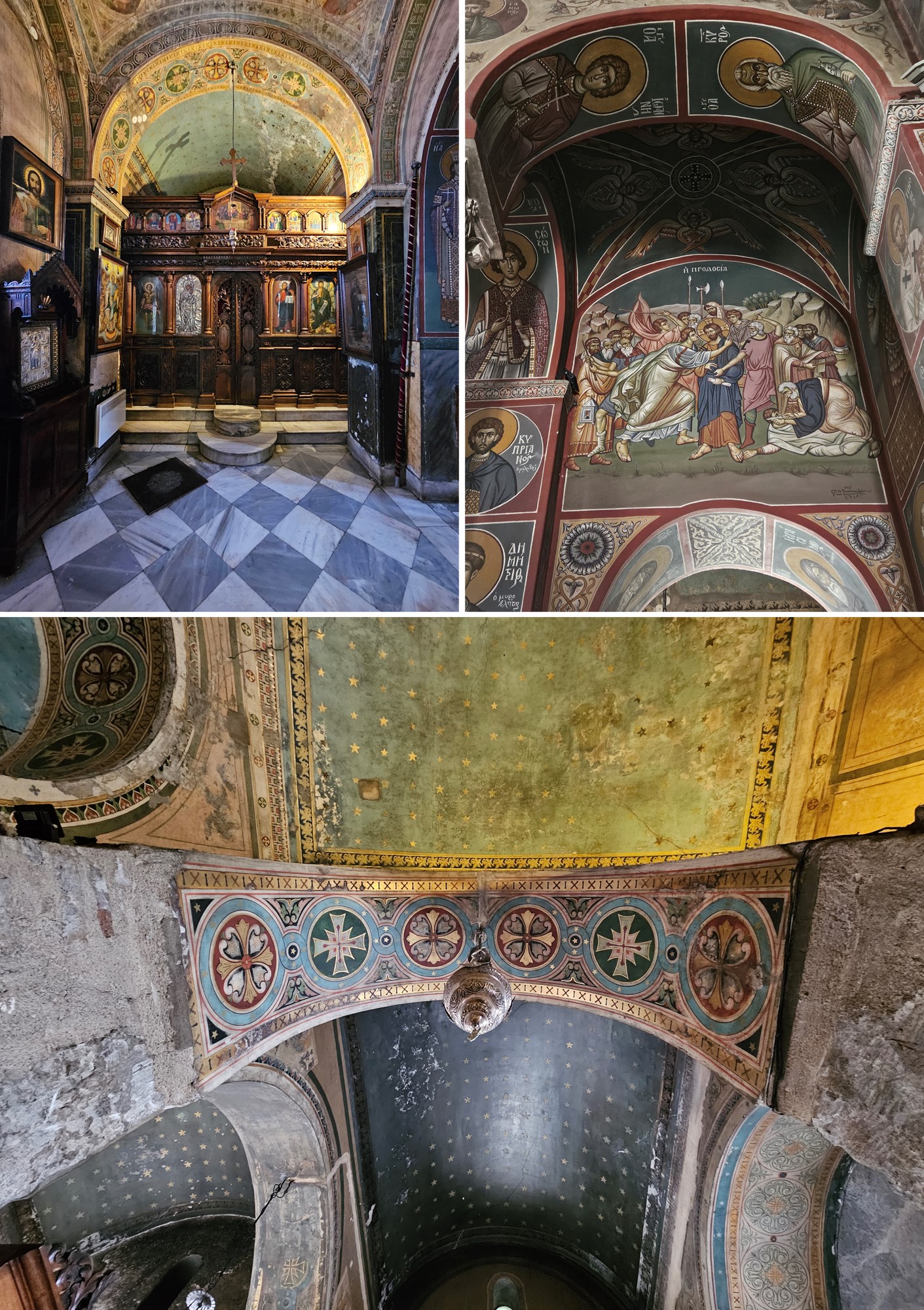
Throughout its millenary history, this small but sturdy church has survived several attempts at destruction. It was bombed by the Ottomans in 1689, and in the 19th century, King Otto I of Greece proposed its demolition, claiming that it did not fit into the new urban design promoted by its architect. However, his father, King Ludwig I of Bavaria, strongly opposed this decision and managed to save the church.
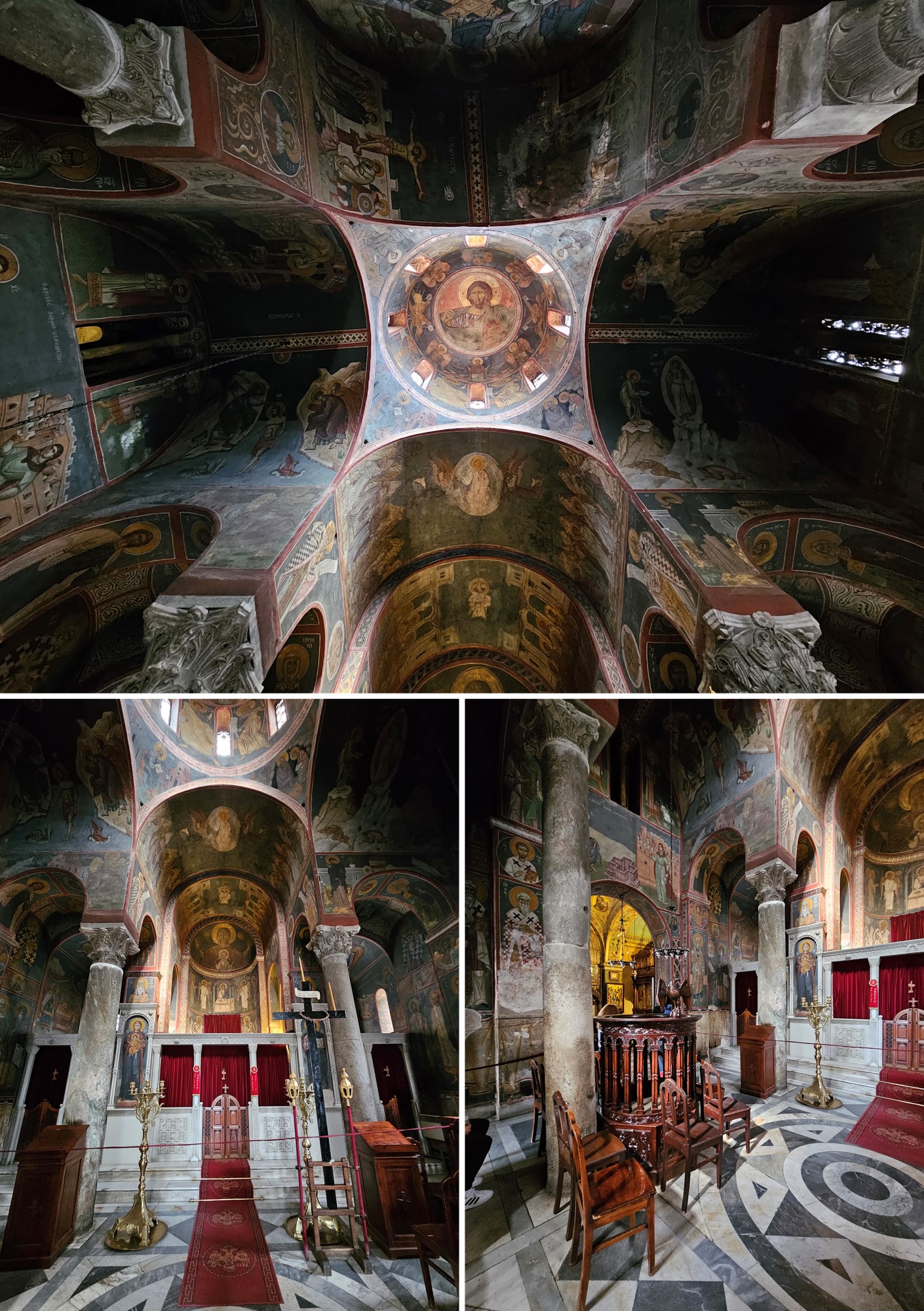
Significant restoration work has been carried out to preserve both the structure and the interior frescoes, and some original frescoes are still preserved along with parts of the internal structure. In the 1940s, the Greek painter Fotis Kontoglou, who specialized in Byzantine iconography on Mount Athos, created a new series of icons.
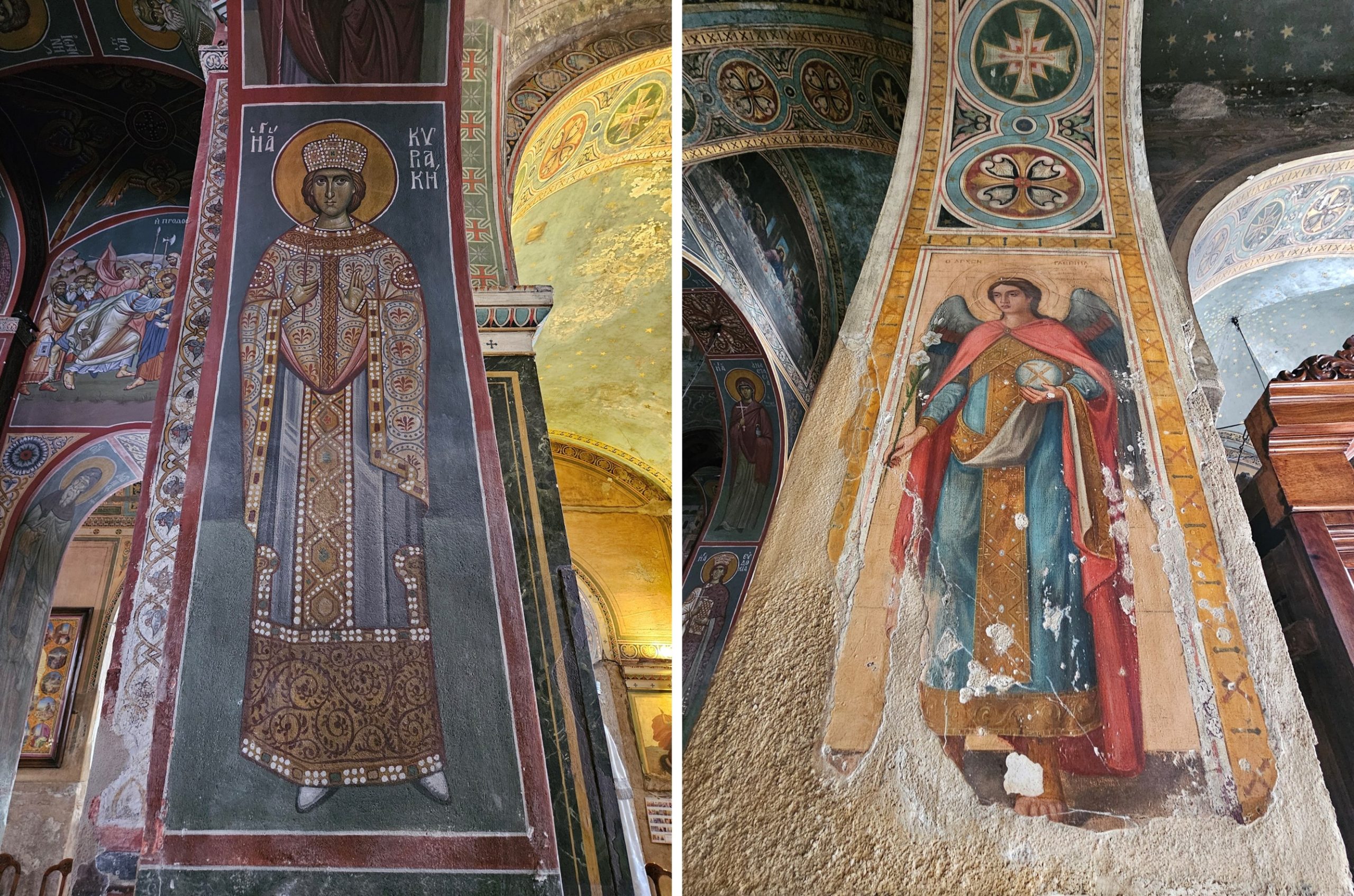
Today, the church is part of the University of Athens and remains an important element of the city’s history and daily life. Its location, in the center of Athens, is very close to Monastiraki Square and Syntagma Square, making it easily accessible on foot. Every day, it offers Greek Orthodox liturgy.

| Resources:
· https://www.turismoengrecia.com/iglesia-kapnikarea-atenas · https://en.wikipedia.org/wiki/Church_of_Panagia_Kapnikarea · https://www.thebyzantinelegacy.com/kapnikarea · https://santorinidave.com/panagia-kapnikarea |
